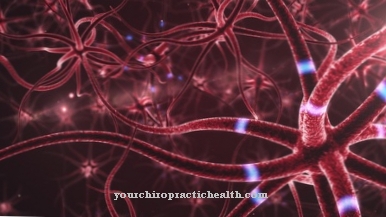In the Transdifferentiation a metamorphosis takes place. The differentiated cells of a given cotyledon are transformed into the cells of another cotyledon through processes such as histone deacetylation and methylation. Faulty transdifferentiation processes underlie many diseases, such as Barrett's oesthrophagus.
What is transdifferentiation?

Embryonic development takes place on the basis of three different germ layers. Differentiation is a step in embryonic cell development. Cells transform into a specialized form through differentiation processes. The first differentiation of the omnipotent embryonic cells corresponds to the development of the germ layers, which are tissue-specific and therefore no longer omnipotent.
Transdifferentiation is a special case or even a reversion of differentiation. The process corresponds to a metamorphosis. The cells of one cotyledon are converted into the cells of another cotyledon. Most transdifferentiations do not take place directly, but correspond to a dedifferentiation, which in turn is followed by a differentiation in the opposite directions. Scientists mainly associate transdifferentiation with human stem cells.
With every transdifferentiation there is a complete change in the respective gene expression at the molecular biological level. Each transdifferentiation requires an activity change in thousands of individual gene segments. Pathological transdifferentiation processes take place in connection with some diseases. Basically, transdifferentiation does not have to have any pathological value.
Function & task
In the context of transdifferentiation, the gene expression of a cell changes completely at the molecular genetic level. This has implications for replication. In the transdifferentiated cell, completely different sections of the gene are replicated than originally intended. For this reason, in the end, a completely different protein synthesis than originally planned.
Transdifferentiation is accompanied by the deactivation of previously active genes. This shutdown takes place mainly through processes in the context of histone deacetylation or methylation on the individual DNA segments. The complete process of transdifferentiation requires an activity change of an innumerable number of sections of a gene.
The gene expression of the transdifferentiated cell mostly does not correspond to the original pattern of the gene expression in essential parts. The process of histone deacetylation not only serves to switch off certain gene segments, but also changes the ability of DNA to bind. The histone deacetylation process focuses on histone, from whose structure an acetyl group is removed. This gives histone a much higher affinity for DNA phosphate groups. At the same time, there is less binding capacity between the transcription factors and the DNA.
Transcription factors influence transcription either positively or negatively and are either activators or repressors. The reduced binding ability of the transcription factors results in an inhibition of the individual gene expressions that are located at the corresponding point in the DNA.
The process of methylation also follows the principle of DNA inactivation. The only difference is that methylation processes focus on methyl groups rather than histones. These methyl groups bind to a certain section of the DNA and in this way inactivate the individual DNA sections. When cells differentiate, their gene expression changes significantly and many of the genes are even switched off during the processes.
Complete transdifferentiation depends on high expression of thousands of genes and at the same time requires down regulation of expression of thousands of other genes. This is the only way in which the right proteins are ultimately available for the cell to transform. For example, a muscle cell requires fundamentally different proteins than a liver cell.
The transdifferentiation either takes place directly or via a detour. This detour corresponds to a dedifferentiation, which is followed by a subsequent new differentiation in other directions.
You can find your medication here
➔ Medication for heartburn and bloatingIllnesses & ailments
Transdifferentiations can underlie many different diseases, which makes them clinically relevant. The so-called Barrett's esophagus, for example, is associated with the processes of transdifferentiation. This disease is based on a conversion of cells of the epithelium, which are transdifferentiated into mucin-producing intestinal cells during the pathological processes. In this context, there is talk of intestinal metaplasia, which is associated with an optional risk of degeneration and, for example, can promote the development of adenocarcinomas. In general, Barrett's syndrome is described as a chronic inflammatory change in the distal esophagus that results in the development of peptic ulcers, which can occur as part of complications in reflux disease. In the syndrome, the conversion of squamous epithelium occurs in the distal esophagus.
Another disease based on transdifferentiations corresponds to the formation of leukoplakia. As part of this phenomenon, oral mucous membrane cells transdifferentiate into precancerous lesions that can promote squamous cell carcinoma. Leukoplakia is hyperkeratosis of the mucous membrane that is often dysplastic at the same time. In addition to the oral cavity, these leukoplakias occur primarily on the lips and in the genital area. Leukoplakia is usually preceded by chronic irritation of the skin or mucous membranes. This irritation thickens the horny layer in the affected area. The reddish mucous membrane turns so whitish that the capillaries under the thick epithelium can no longer be made out.
The causal stimulus can be mechanical, biological, physical or chemical in nature. The biological stimuli include chronic viral infections. The chemically causative stimuli mostly arise from smoking or chewing tobacco. A poorly fitting denture, for example, can be considered as a mechanically causative stimulus.













.jpg)

.jpg)
.jpg)











.jpg)